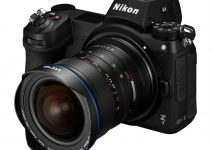New and experienced editors have likely asked themselves, “What NLE should I be using?” In the past decade, I went from Final Cut Pro 7 to Avid Media Composer to Premiere Pro to DaVinci Resolve with a mix of Final Cut Pro X and I still switch between a few depending on who I am working with.
It’s hard to say if any is better than another, but it is easy to say that Final Cut and Premiere are among the most used for indie filmmakers.
Coming at us from Matti Haapoja is a video that breaks down the key differences between FCP X and Adobe Premiere Pro CC. It’s 2020 and a lot has changed as software gets updated. It wasn’t all that long ago that nobody would touch FCP X and now it’s fairly common to see.
It’s going to be easiest to compare Premiere and FCP X if it gets broken down into sections.
Timeline
This is where you are going to spend most of your time as an editor. Premiere Pro CC uses a fairly conventional system based on having multiple tracks available and various tools for moving, trimming, and more actions.
Final Cut moved to a more distinct Magnetic Timeline. There’s nothing wrong with Premiere’s approach, and if you have any experience with NLEs already it will likely be very familiar.
Apple tried to solve problems people never asked to be fixed when they introduced Final Cut Pro X. It’s nice for fast editing and is intuitive enough that most people can pick it up, but it has some quirks that make it hard to do specific things since it is a bit sticky. Premiere Pro doesn’t do all that and makes it easier for experienced editors to work.
Speed
Premiere Pro doesn’t seem to be getting better with age. Adobe seems to add more and more which in turn tends to make the software feel slower and slower.
Also, while the timeline is a bit more freeing it doesn’t seem quite as fast as Final Cut can be. Also, Final Cut Pro is super optimized for macOS and this tight integration between hardware and software has always led to better performance for Apple products.
Features
On the surface, it appears that Premiere has more features. However, over time Final Cut Pro X has definitely caught up. Haapoja even says that as he continues to use FCP X he finds all the features he uses in Preimiere Pro.
He also points out that some features are better in one than the other, but not by much.
Plug-Ins and Effects
Again, both FCP X and Premiere have a good array of plug-ins and effects available. Final Cut may have it organized a bit oddly but then Premiere just tossed everything in a single bin.
One very specific feature is that Final Cut has tons of motion blur options, while Premiere doesn’t have anything reliable per Haapoja. This specific effect helps him with speed ramps and making them look a bit more natural.
Workflow
As an experienced editor, Haapoja definitely prefers Premiere Pro. Final Cut Pro X tends to take away a lot of that granular control and does its own thing when you import footage that can make things a little more annoying.
Premiere’s straightforward approach to bins and manual organization are easier. Also, he points out that Final Cut Pro X relies on Compressor for custom export settings whereas Premiere can do everything on its own.
Price
Hard to argue here, Final Cut Pro X is a flat $300 one-time purchase which is supported on all Macs where you are logged in. Premiere Pro CC is a $20/month subscription or about $50-60/month as part of the Creative Cloud Suite. It definitely adds up over time, so FCP X is cheaper.
What Could Be Better?
Haapoja calls out both for having lackluster color grading tools. Compared to something like DaVinci Resolve, Premiere and FCP X fall short in color tools.
They can still get the job done, but still. Making text is the next issue. Can’t say I disagree there, building text is a pain in both programs for sure, I actually prefer creating titles in Photoshop and bringing them in for more reliability.
Premiere could benefit from having more auto-saving features like Final Cut has to avoid accidentally losing edits. Premiere could also export a bit faster. And then Final Cut could really do something about how files are managed after import or at least give users an option.
Final Verdict
So which program is Haapoja going to keep using? Easy. It’s Premiere Pro. It works better for him and probably the fact that it is a more conventional NLE makes him able to use it faster.
Final Cut is still a bit of a mystery and that can slow an editor down dramatically. He does concede that beginners might find FCP X to be easier to use.
Which NLE do you prefer? One of these or something else?
[source: Matti Haapoja]
Disclaimer: As an Amazon Associate partner and participant in B&H and Adorama Affiliate programmes, we earn a small comission from each purchase made through the affiliate links listed above at no additional cost to you.




